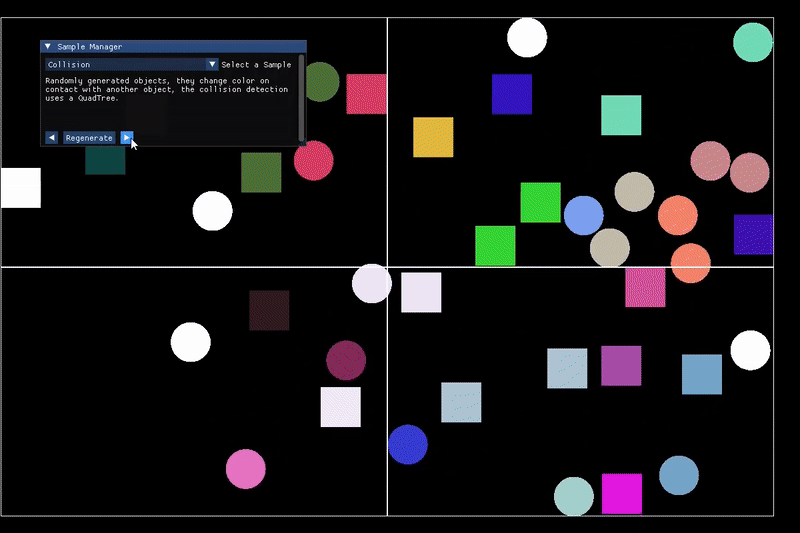Overview
This physics engine was developed as part of a module covering physics, mathematics, optimization, CPU architecture, and profiling during the second year of a Bachelor’s degree in Games Programming at SAE Institute Geneva.
The primary objective was to design the engine as a user-friendly API while optimizing its performance. A key requirement was ensuring that the engine could run a sample scene with 1,000 colliders in trigger mode at a minimum of 60 FPS.
To achieve this, I implemented a custom mathematics library (done with the help of my classmates) and developed essential C++ utilities, including smart pointers, allowing me to integrate custom memory allocators for profiling and optimizing memory management.
Later, I extended the engine to support 3D physics and rendering, transitioning from my custom math library to DirectXMath for better performance and SIMD-optimized vector operations.
How it looks like
Here is video of both 2D and 3D physics engine
Here is demo of the 2D physics engine you can test.
What did I learn
- Basics of Calculus
- Basics of Linear Algebra
- Basics of Physics
- Choose and use the right C++ data structures in a given context
- Low level C++ API programming
- Template programming
- Writing custom allocators
- Profiling code and memory management
- Optimisation tricks
- Padding
- Memory layout
- Cache hit
- Quadtree then Octree
- How a modern CPU works
